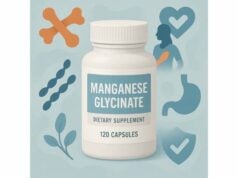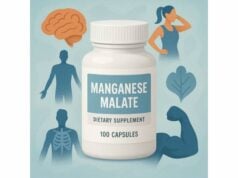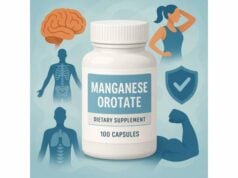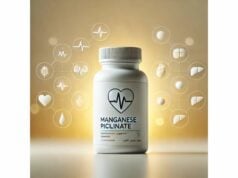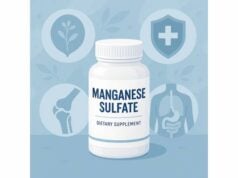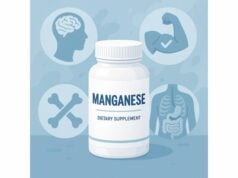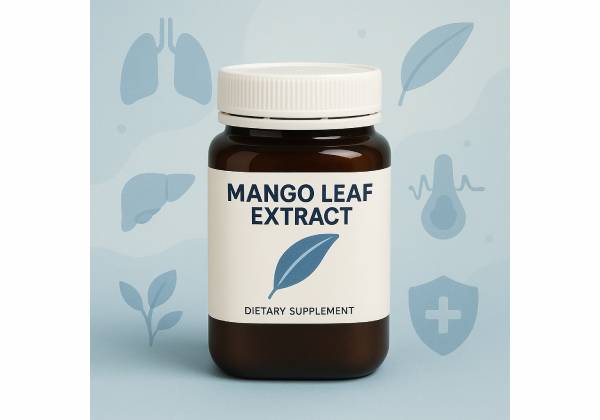
Mango leaf extract (MLE) is a standardized concentration of bioactive compounds from the leaves of the mango tree (Mangifera indica). Its best-known constituent is mangiferin, a glucose-bound xanthone that has attracted attention for potential benefits in cognitive performance, energy metabolism, and inflammation balance. Interest in MLE has grown for two reasons: first, laboratory and early human studies suggest short-term improvements in attention and processing speed under cognitive demand; second, longer programs of purified mangiferin have shown favorable changes in triglycerides and free fatty acids in people with elevated lipids. At the same time, raw mangiferin is poorly water-soluble, so modern formulations use high-standardization extracts or more soluble salt forms to improve absorption and dose efficiency. In practice, MLE is used acutely (single doses before demanding tasks) and chronically (daily micro-programs for 8–12 weeks) with a generally reassuring short-term safety profile in healthy adults. This guide explains what MLE is, how it may work, realistic benefits, how to dose it, safety guardrails, and how to decide whether it fits your goals.
Essential Insights
- Short-term use may support processing speed and selective attention from 30–300 minutes after dosing, especially during high mental demand.
- Twelve weeks of 150 mg/day purified mangiferin improved triglycerides and free fatty acids in overweight adults with hyperlipidemia.
- Typical ranges: 300 mg MLE (≥60% mangiferin) once for acute testing; or 150–300 mg/day for 8–12 weeks for metabolic aims.
- Generally well tolerated; monitor for mild gastrointestinal upset and for changes in glucose or lipids if you have metabolic conditions.
- Avoid during pregnancy or breastfeeding and use caution with glucose-lowering or anticoagulant therapy unless your clinician agrees.
Table of Contents
- What is mango leaf extract?
- Does it work? Proven benefits
- Dosage, how to take, and forms
- How to use it for specific goals
- Safety, side effects, and who should avoid
- Evidence and research summary
What is mango leaf extract?
Mango leaf extract is a concentrated preparation derived from the leaves of Mangifera indica. Although mango fruit is better known, the leaves contain a higher density of polyphenols—especially mangiferin—along with quercetin glycosides and minor phenolics. Most supplements standardize to at least 60% mangiferin, stated on the label as “MLE ≥60% mangiferin” or similar. You will also see purified mangiferin used as a standalone ingredient and newer soluble derivatives (for example, a monosodium salt) designed to disperse in water and enhance absorption.
Why does standardization matter? Polyphenols often have overlapping actions: antioxidant support, signaling effects on inflammatory pathways, and impacts on mitochondrial metabolism. Mangiferin sits at the center of MLE’s profile. In human settings, the extract has been studied in two primary contexts:
- Acute cognitive performance: Single-dose trials explore processing speed, attention, and accuracy over a few hours after ingestion. Results generally point to benefits when tasks are demanding or stressful, with dose and formulation affecting magnitude.
- Cardiometabolic markers: Daily programs with purified mangiferin—often 150 mg/day—have shown improvements in triglycerides and free fatty acids over 8–12 weeks, alongside shifts in markers of fatty acid oxidation.
MLE should not be viewed as a pharmaceutical. Its effects are modest and context-dependent, which is typical for plant polyphenols. That said, there are practical reasons some people consider it:
- A non-caffeine option to target mental performance during specific windows (study time, exams, deadlines).
- A standardized, measurable adjunct to diet and activity when addressing elevated triglycerides with a clinician’s guidance.
- A way to explore polyphenol benefits without relying on very high fruit or tea intake.
As you evaluate MLE, focus on formulation clarity and outcome tracking. Extract chemistry (pure compound vs. extract matrix vs. soluble salt), dose size, and the presence or absence of cognitive stressors all influence whether you notice a benefit.
Does it work? Proven benefits
Cognition and mental performance (single doses): Multiple controlled crossover studies have examined MLE standardized to ≥60% mangiferin. A notable study with 300 mg reported improvements in an “Accuracy of Attention” composite and an “Episodic Memory” factor, with effects apparent from 30 minutes and lasting to 5 hours. Another large crossover study that used the same 300 mg dose but did not include a multitasking stressor found no global cognitive benefits and observed small decrements in specific subtraction tasks. A more recent trial using a water-soluble version of MLE at 100–150 mg showed improvements in processing speed, selective attention, and cognitive flexibility and reported reduced tension and confusion on a validated mood scale. The most defensible takeaway is that MLE’s acute cognitive benefits appear more consistent under cognitive load and when absorption is enhanced. Expect variability person to person.
Lipids and fatty acid handling (daily programs): In overweight adults with hyperlipidemia, 150 mg/day of purified mangiferin for 12 weeks significantly reduced triglycerides and free fatty acids compared with placebo, while increasing markers consistent with increased fatty acid oxidation (for example, L-carnitine and beta-hydroxybutyrate). This aligns with the mechanistic profile observed in laboratory work and suggests a specific niche: adjunct support for elevated triglycerides, alongside diet and activity.
Exercise performance: Studies combining MLE with other polyphenols (such as quercetin or luteolin) have reported benefits for repeated-sprint performance, especially under ischemia-reperfusion stress models. Because these use combinations, it is hard to attribute effects solely to MLE. If you test MLE for training, set expectations appropriately and evaluate it separately before adding other actives.
Inflammation and oxidative stress: Biomarker improvements (e.g., lower lipid peroxidation, shifts in antioxidant enzymes) are commonly reported in preclinical research and in some combination trials. Dedicated human trials with inflammatory endpoints using MLE or mangiferin alone are fewer, so claims should be cautious.
Glycemic control: Animal models suggest support for insulin sensitivity and glucose transport. In humans, outcomes specific to MLE or purified mangiferin are still emerging. If you live with diabetes or use medications that lower glucose, you should monitor closely and coordinate with your clinician.
Bottom line:
- For acute mental performance under pressure, consider 300 mg of standard MLE or 100–150 mg of a soluble formulation.
- For triglyceride-centric metabolic support, 150 mg/day purified mangiferin for 8–12 weeks is the clearest human-tested regimen.
- Other potential benefits remain promising but are not yet definitive.
Dosage, how to take, and forms
Common forms you will encounter
- Standardized MLE (≥60% mangiferin): The most prevalent form in capsules or powders. This is what most cognition trials used at 300 mg.
- Purified mangiferin: The isolated compound, frequently dosed at 150 mg/day in metabolic studies.
- Soluble or “salt” forms: A monosodium version designed to improve water solubility and systemic exposure. These are often used at lower acute doses (100–150 mg) in cognitive studies because they reach higher plasma levels than non-soluble extracts gram-for-gram.
Evidence-aligned dosing ranges
- Acute cognition:
- 300 mg of standard MLE (≥60% mangiferin), taken once, assessed 30–300 minutes post-dose.
- 100–150 mg of a soluble MLE formulation for similar timing, potentially improving dose efficiency.
- Metabolic aims (lipids/FFAs):
- 150 mg/day purified mangiferin for 12 weeks yielded beneficial triglyceride and free fatty acid changes in adults with hyperlipidemia.
- If used outside a trial context, many clinicians advise an 8–12 week evaluation window and lab follow-up.
Timing
- Cognitive windows: Take 30–60 minutes before the period of highest demand. If you also use caffeine, test MLE alone first to understand its individual effect; add caffeine later if desired.
- Daily cardiometabolic programs: Take with a meal for comfort and consistency. Morning or midday works well for routine adherence.
Stacking considerations
- With caffeine: Can increase perceived effects but adds confounding and may raise anxiety in sensitive individuals.
- With other polyphenols (quercetin, luteolin): Some performance studies combine these, but start with MLE alone to establish a baseline response.
- With omega-3s or fiber: Reasonable complementary strategies for triglyceride management under healthcare guidance.
Quality and label checks
- Confirm standardization (e.g., “≥60% mangiferin”) or the exact milligrams of mangiferin per serving.
- Look for third-party testing for identity, potency, and contaminants (heavy metals, solvent residues).
- If a product claims a soluble or salt form, the label should state this clearly.
- For powders, clarity on whether the milligrams refer to the extract or to mangiferin content prevents under- or overdosing.
Practical starter plans
- Acute focus test: One dose of 300 mg standard MLE or 100–150 mg soluble MLE 45 minutes before a cognitively demanding session. Note performance quality, accuracy, and perceived mental fatigue at 1, 3, and 5 hours.
- Triglyceride support trial: 150 mg/day purified mangiferin with a meal for 12 weeks, plus diet and activity steps. Recheck fasting lipids near week 10–12.
How to use it for specific goals
1) Studying, exams, or high-stakes work
- Goal: Better processing speed, selective attention, and steadier performance during complex tasks.
- What to do: Use either 300 mg standard MLE or 100–150 mg soluble MLE 30–60 minutes before work begins. Build a consistent pre-task routine (hydration, light snack, brief movement) so you can isolate the extract’s contribution.
- How to measure: Track time-to-first-error, accuracy on serial subtraction or similar tasks, and subjective mental fatigue at 3 and 5 hours. If you rely on a pomodoro rhythm, log the number of quality cycles completed per session.
2) Public speaking or performance under pressure
- Goal: Maintain clarity and reduce tension without heavy stimulants.
- What to do: Trial a soluble MLE dose (100–150 mg) on rehearsals to confirm comfort, then deploy on event days about 45 minutes pre-start.
- Caveats: Avoid first-time use on an important day. If you also ingest caffeine, test combinations in rehearsal to check for jitter.
3) Elevated triglycerides in the context of weight or insulin resistance
- Goal: Complement diet, activity, and guideline-based care with a standardized polyphenol.
- What to do: 150 mg/day purified mangiferin for 8–12 weeks. Pair with a consistent meal, log adherence, and record fasting triglycerides at baseline and follow-up.
- What to expect: Changes are typically modest; continue the broader lifestyle program and do not substitute for prescribed therapies.
4) Training and recovery
- Goal: Support performance during high-demand efforts or speed recovery when sessions are clustered.
- What to do: If you experiment, try acute doses before intense work. To understand its independent effect, avoid adding other ergogenic polyphenols initially.
- Assessment: Time to exhaustion, sprint repeatability, and next-day soreness ratings. If you find no meaningful change after three to four trials, discontinue.
5) General wellness curiosity
- Goal: Explore polyphenol support at conservative doses.
- What to do: 100–150 mg/day of a high-standardization extract or soluble MLE for four weeks, then stop for two weeks to gauge the difference.
- When to stop: If you see no tangible benefits or if side effects occur.
Troubleshooting common issues
- Mild stomach upset: Take with food, split the dose, or try a different brand.
- No noticeable cognitive effect: Ensure tasks are sufficiently demanding; consider a soluble formulation; reassess sleep, hydration, and caffeine intake.
- Lab changes do not meet expectations: Recheck adherence, dose, and diet; continue physician-directed care rather than increasing dose without supervision.
Safety, side effects, and who should avoid
Overall tolerability
Short-term studies with standard MLE (100–500 mg single doses) and longer programs with purified mangiferin (150 mg/day for 12 weeks) generally report good tolerability. The most common minor complaints are gastrointestinal (nausea, cramping) and occasional headache. Taking with a meal and adequate hydration usually helps.
Potential interactions and cautions
- Glucose-lowering medications: Because mangiferin can influence glycemic pathways, coordinate with your healthcare professional if you use insulin, sulfonylureas, GLP-1 receptor agonists, or SGLT2 inhibitors. Monitor glucose more closely during the first two weeks.
- Anticoagulants and antiplatelets: Polyphenols can modulate platelet activity in some contexts. Although direct signals for MLE are limited, observe for bruising or bleeding and inform your clinician if anything unusual appears.
- Lipid-lowering therapy: No established contraindication, but independent changes in triglycerides can complicate medication decisions—share your supplement plans and lab results with your prescriber.
- Liver and kidney conditions: Data are limited; avoid unsupervised use if you have chronic disease affecting these organs.
Who should avoid MLE
- Pregnant or breastfeeding individuals due to insufficient safety data.
- Children and adolescents (no established pediatric dosing or indications).
- People with known mango allergy or sensitivity to Anacardiaceae family plants.
Monitoring guide for safe use
- Acute cognitive use: Track sleep quality and stimulant intake; do a test day before important events.
- Metabolic programs: Check fasting lipids at baseline and at 8–12 weeks; optional tracking of free fatty acids if available.
- Warning signs to stop immediately: Persistent abdominal pain, jaundice, dark urine, rash, breathing difficulty, or any new/worsening symptom temporally linked to MLE.
Quality assurance to reduce risk
- Choose products with third-party testing that verify identity, potency, and contaminant levels.
- Prefer labels that specify standardization (≥60% mangiferin) or disclose the exact milligrams of mangiferin per serving.
- If using a soluble formulation, the label should name the form and standardization.
Evidence and research summary
Cognitive performance—what the trials show
The evidence base now includes several randomized, double-blind crossover studies in healthy adults. The earliest positive reports used 300 mg of standard MLE and found improved task accuracy and attention for up to five hours. A later, larger crossover study that removed a multitasking stressor did not replicate broad benefits and observed small decrements on specific subtraction tasks at the same 300 mg dose. Most recently, a soluble, water-dispersible form delivered at lower doses (100–150 mg) showed improvements in processing speed, selective attention, and cognitive flexibility, along with reduced tension and confusion, over a five-hour window. These patterns suggest that context (cognitive load) and formulation (solubility, exposure) are meaningful moderators of effect.
Cardiometabolic outcomes—what is most credible
A randomized, double-blind controlled trial in overweight adults with hyperlipidemia tested 150 mg/day purified mangiferin for 12 weeks and reported significant reductions in triglycerides and free fatty acids compared with placebo, alongside increases in biomarkers consistent with enhanced fatty acid oxidation. LDL-C did not change materially. This supports MLE’s most defensible metabolic niche: adjunct support for triglyceride reduction in people who are already addressing diet, activity, and medical therapy as indicated.
Absorption and formulation advances
Pure mangiferin’s low water solubility limits systemic exposure. Pharmacokinetic work comparing a standard 60% MLE with a monosodium salt version (also 60%) showed approximately 2.4-fold higher exposure with the soluble form at equal labeled content, while time to peak and half-life were similar. In practice, this explains why newer studies can achieve cognitive effects at 100–150 mg and supports the use of lower doses for beverage or functional food applications when a soluble form is used.
Where the evidence is still thin
- Long-term safety beyond several months in diverse populations.
- Direct head-to-head trials comparing standard extract vs. soluble MLE vs. purified mangiferin on the same outcomes.
- Dedicated RCTs on inflammatory conditions, liver fat, or joint comfort using MLE alone.
- Data in clinical populations with diabetes, kidney disease, or cardiovascular disease.
How to interpret this as a consumer
- If you aim for acute mental clarity during demanding work, a soluble MLE at 100–150 mg or standard MLE at 300 mg is consistent with current evidence.
- If you aim for triglyceride support, 150 mg/day purified mangiferin for 8–12 weeks is the clearest tested regimen; plan lab follow-up.
- Use objective measures (timed tasks, validated scales, fasting labs) to judge whether MLE is delivering value for you.
References
- Acute Effects of a Polyphenol-Rich Leaf Extract of Mangifera indica L. (Zynamite) on Cognitive Function in Healthy Adults: A Double-Blind, Placebo-Controlled Crossover Study 2020 (RCT)
- Acute effects of mango leaf extract on cognitive function in healthy adults: a randomised, double-blind, placebo-controlled crossover study 2024 (RCT)
- Acute Supplementation of Soluble Mango Leaf Extract (Zynamite® S) Improves Mental Performance and Mood: A Randomized, Double-Blind, Placebo-Controlled Crossover Study 2025 (RCT)
- Human Pharmacokinetic Profiling and Comparative Analysis of Mangiferin and Its Monosodium Derivative from Mangifera indica Extracts Using UHPLC-MS/MS with 1H NMR and MALDI-TOF Confirmation 2025
- Mangiferin supplementation improves serum lipid profiles in overweight patients with hyperlipidemia: a double-blind randomized controlled trial 2015 (RCT)
Medical Disclaimer
This guide is for educational purposes only and is not a substitute for personalized medical advice, diagnosis, or treatment. Do not start, stop, or change any supplement or medication based on this article without consulting a qualified healthcare professional, especially if you are pregnant or breastfeeding, have a medical condition, or take prescription drugs. If you experience adverse effects after taking mango leaf extract or mangiferin, discontinue use and seek medical care.
If this article was useful, please consider sharing it on Facebook, X (formerly Twitter), or any platform you prefer, and follow us on social media. Your support helps us continue creating careful, evidence-focused health content.

